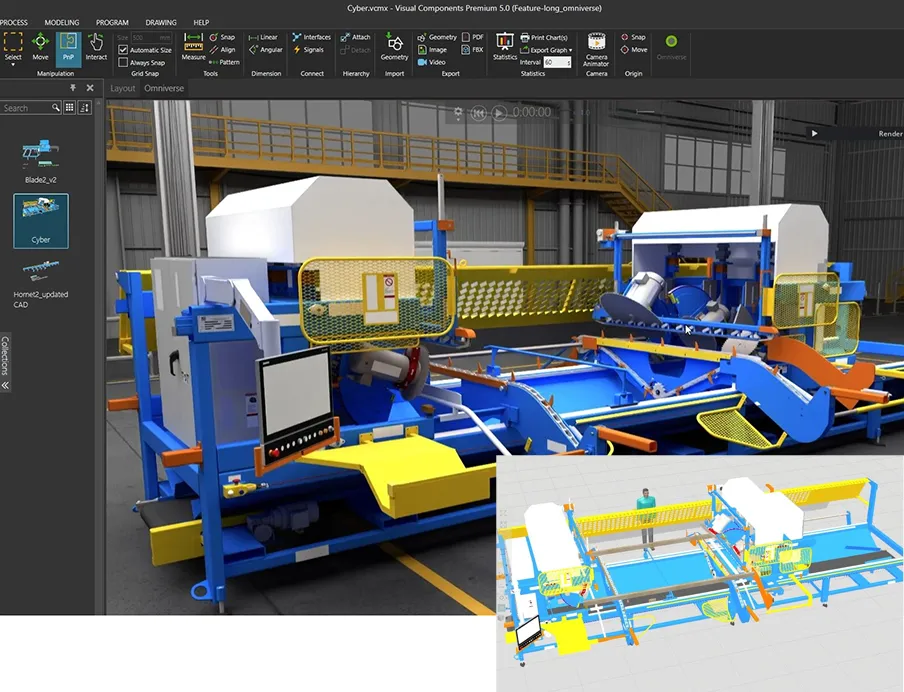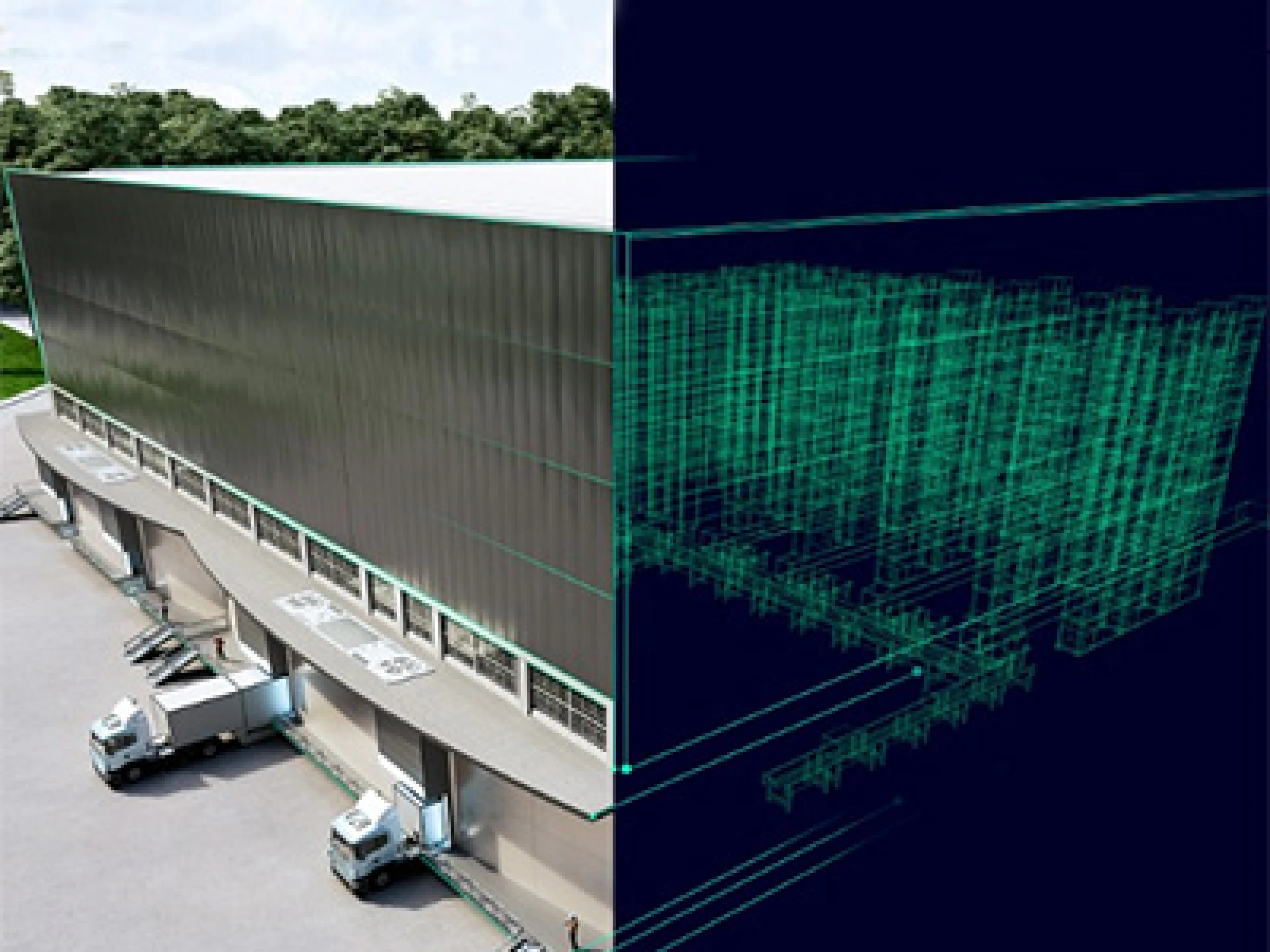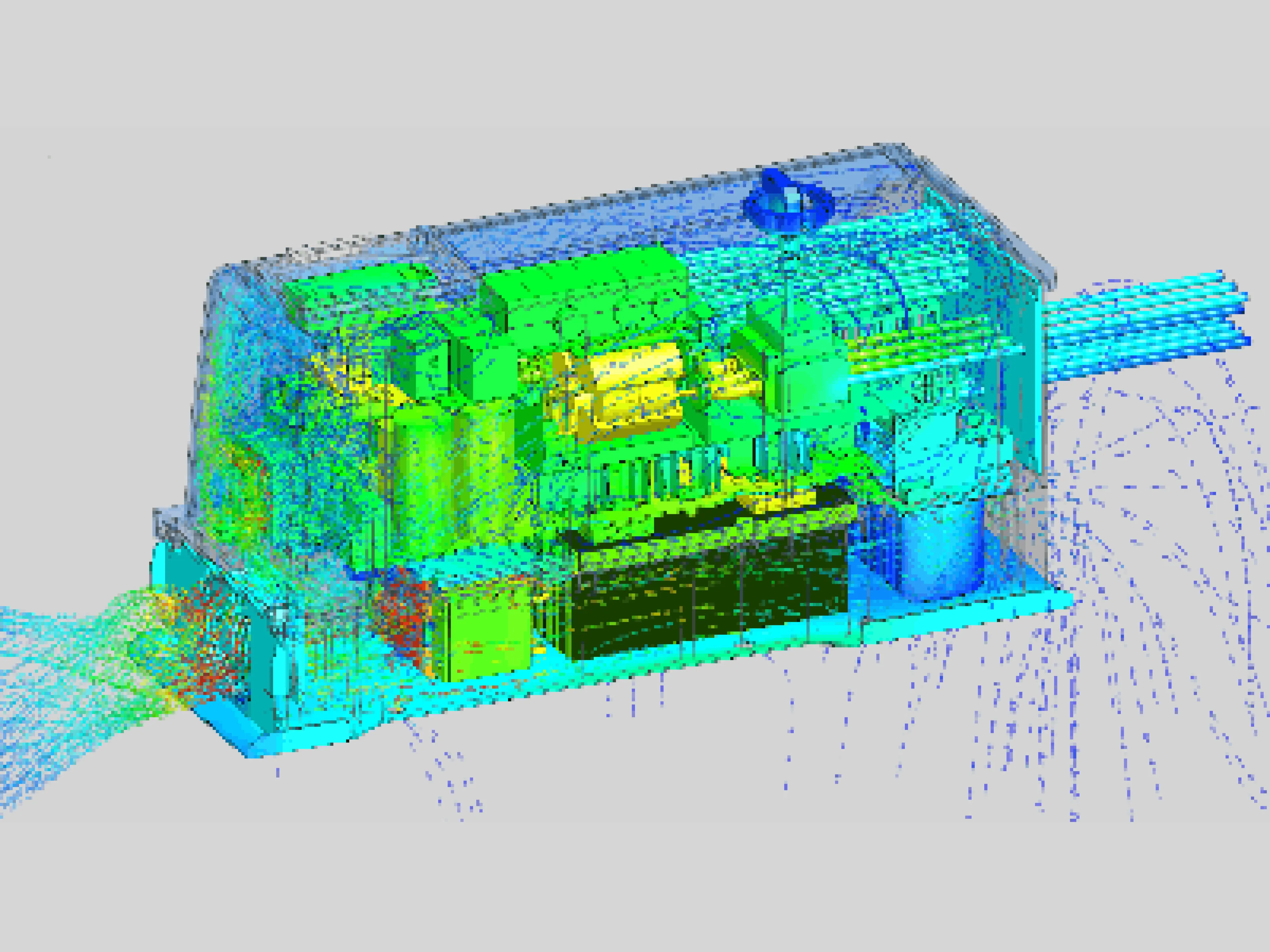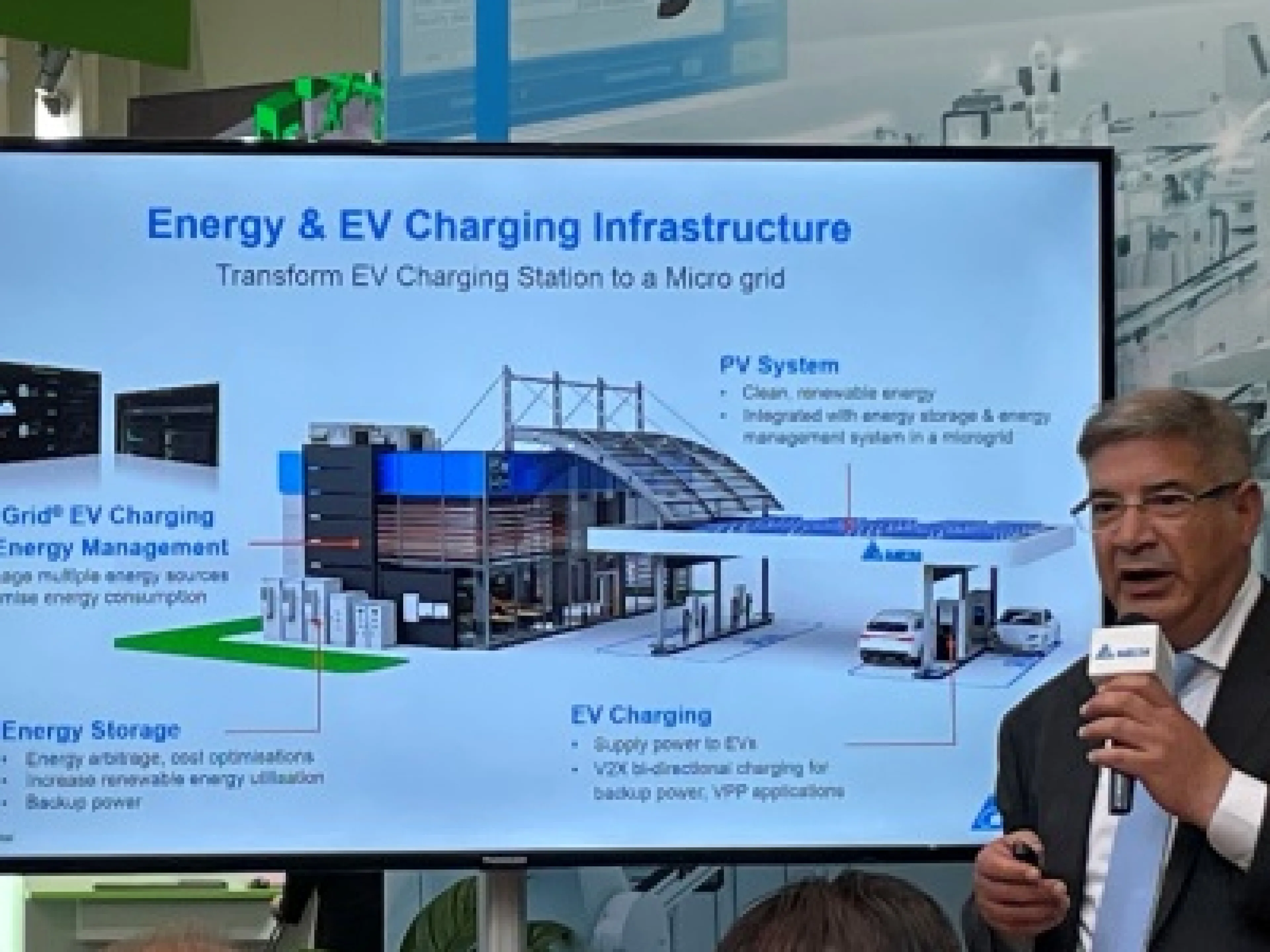
With a new add-on, Visual Components is taking its manufacturing simulation platform to the next level. The extension is built on the Nvidia Omniverse technology platform and offers manufacturers and system integrators the ability to visualize, review, and present factory layouts in an immersive 3D environment in real time. The goal is to significantly improve factory visualization in production environments.
Factory visualization integrated directly into the workflow
The technology is based on a viewport embedded into the existing simulation environment, enabling real-time rendering with photorealistic lighting and lifelike materials. Layout changes are automatically applied without the need to recreate models or use additional software. This results in high-quality visualizations within the familiar workflow, making factory visualization more efficient.
Immersive 3D views support communication and planning
With this solution, manufacturers and system integrators can not only design production layouts but also jointly review them with stakeholder, both technical and non-technical. A shared 3D space enhances clarity, facilitates collaboration, and increases confidence in investment decisions. Immersive visualizations help close the gap between digital models and the real-world factory.
Future use cases in the context of factory visualization
The first version of the add-on focuses on real-time rendering but also lays the foundation for future use in digital twin scenarios. This enables companies to gradually adopt factory visualization and leverage the extension as a building block toward smart manufacturing.
Factory visualization seamlessly integrated into simulation tools
The collaboration between Visual Components and Nvidia reflects a commitment to tightly linking simulation, AI, collaboration, and factory visualization. The add-on provides manufacturers with a tool that integrates directly into existing simulation platforms, allowing them to design and present virtual factories more quickly, realistically, and convincingly.
According to Mikko Urho, CEO of Visual Components, the add-on developed in collaboration with Nvidia is designed to reduce the gap between digital models and physical reality. He emphasizes that realistic visualizations make it easier for decision-makers at all levels to understand available options, align on a direction, and invest with confidence.
Juha Renfors, Vice President of Product Management at Visual Components, explains that the project marks the beginning of a broader collaboration with Nvidia. He stated that the add-on establishes a strong foundation for future developments. While it currently enhances real-time layout visualization, it is also intended to support validation based on actual manufacturing performance, enable predictive insights, and improve decision-making in both engineering and operations.









